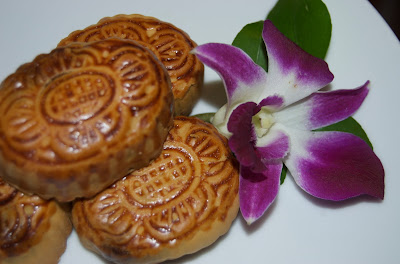The cuisine of Taiwan borrows heavily from southern China and also from Japan, thanks to 50 years of occupation early last century. I’m still trying to figure out the differences, but at this point I don’t see a lot. Still, I’m glad for the opportunity to feast on dumplings, which are incredibly popular in Taiwan.
Din Tai Fung Dumpling House in Arcadia is a veritable palace of dumplings (they have locations in Taiwan, too, but for now a drive into the next valley will have to do). We knew it had to be a good choice as soon as we walked up–the place was buzzing and full, with people waiting both inside and out. When we left it was still busy. To our surprise, some friends popped in and were seated at the table next to ours. “We’re on the way to Palm Springs, but we just had to stop off for some dumplings!” they said. Instant party!
The restaurant has windows into the kitchen, so you can keep an eye on the progress of all the dough that’s being made fresh by a battery of nimble fingered dumpling wranglers (say that three times real fast!). I had to shoot this photo through a covered glass, so the quality’s not great. But you can see the guy in the foreground to the left rolling out lengths of dough and pinching it into pieces that his compadres behind him will roll out, fill with all sorts of meats and vegetables and crimp into the appropriate shapes. Everything is made by hand here, every precise fold on every delicate dumpling.
We went with our friends Andy and Mai, who are regulars here, and we let them navigate the menu for us.
We started with xiaolongbao or “soup dumplings,” juicy dumplings filled with pork and crab and steamed. The operative word here is “juicy,” because when you chomp down on them, they squirt broth into your mouth…and onto your shirt if you’re not careful! If they’ve just arrived at the table it’s best to nip a tiny hole in the dumpling and carefully slurp out the soup, so you don’t burn yourself. But don’t wait too long–when these delicate dumplings cool, they tend to stick to the parchment paper beneath them and can tear when you try to pick them up. And you don’t want to lose a drop of that yummy broth.
These steamed half-moon dumplings are filled with well-seasoned chicken–flavorful with onion and ginger, but not hot. Each dumpling has a different shape, so if you’re a regular here, you can look at a steamer basket of dumplings and know instantly what’s inside them.
These steamed shrimp and pork shiaomai look like tiny volcanoes about to blow shrimp out the top! They’re both tasty and fun, and the shape makes them easy to pick up, which is handy if you’re a klutz with your chopsticks.
Here’s my lovely spread. The tiny dish between the soup bowl and teacup is filled with black vinegar and slivers of fresh ginger. Dipping the dumplings into it helps cut the richness and give them a little extra zing. Some people opt for soy sauce instead, but black vinegar provides a lot of flavor without the added sodium. Black vinegar isn’t just about the sour–it’s a full-flavored sauce all on its own, a grain-based vinegar that is aged similarly to balsamic. And you can always add a little soy and hot sauce to create your own custom blend.
There were also sweet dumplings for dessert, but by this point we were ready to roll out the door like beach balls. Maybe next time we’ll get one less order of savory dumplings and save room for the sweet. And then maybe not. Once you get started it’s so easy to say, “Just one more…oh, and that looks good, too…”















